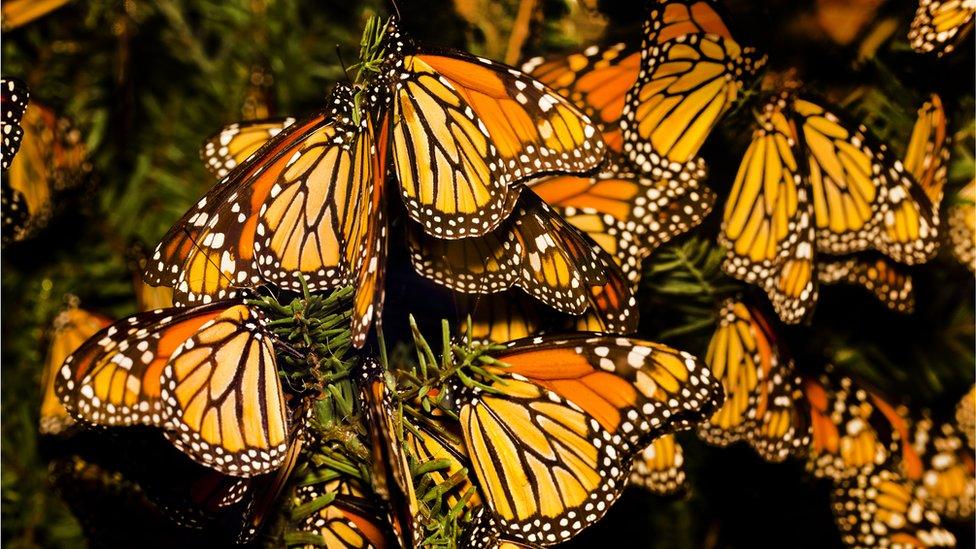Monarch butterflies: Iconic species now listed as endangered
- Published
- comments

Monarch butterflies have been added to the International Union for the Conservation of Nature's (IUCN) Red List of threatened species for the first time.
Experts say the famous orange and black insect has seen such a large decrease in its population size that they are now considered an endangered species.
Numbers of the butterfly have fallen by up to three quarters over the past ten years.
Conservationists say that the species is threatened by habitat destruction and climate change.
What's happened?
The monarch is one of the most recognised species of butterfly in the world.
Every year millions of monarchs migrate from the United States and Canada south to California and Mexico for the winter, nearly 2,500 miles away.
An endangered animal on the IUCN's red list means that it is at a very high risk of extinction in the wild.
There are many reason why conservationists think that their numbers are shrinking.
Monarch butterflies rely on an internal compass in their antennae to fly in the right direction when migrating
The IUCN say that logging and deforestation have destroyed large areas of their winter shelter.
Meanwhile, pesticides commonly used in agriculture to get rid of milkweed - the plant that the butterfly larvae feed on - are harming the insects too.
Climate change is also a threat, with drought, extreme temperatures and severe weather having a significant impact.
What is the IUCN red list?
The International Union for Conservation of Nature (IUCN) is the world's largest global environmental network.
It brings together governments, organisations and experts from around the world in a joint effort to conserve nature and to make the planet more sustainable.
Every year, it produces a red list which looks at how low, or high, the risk of global extinction is to thousands of animal, fungus and plant species.
